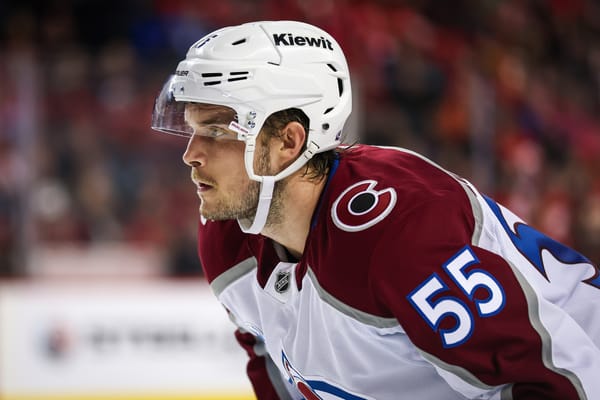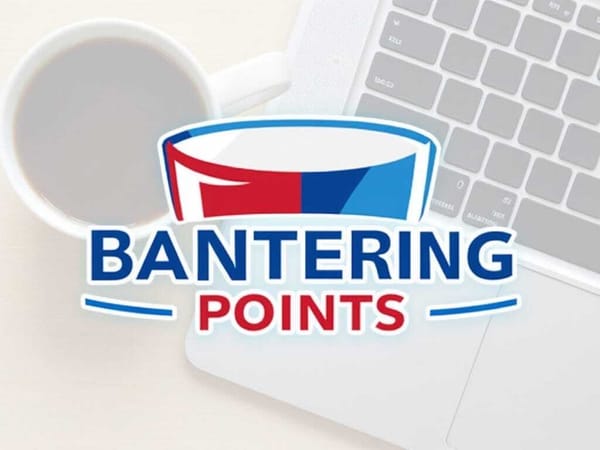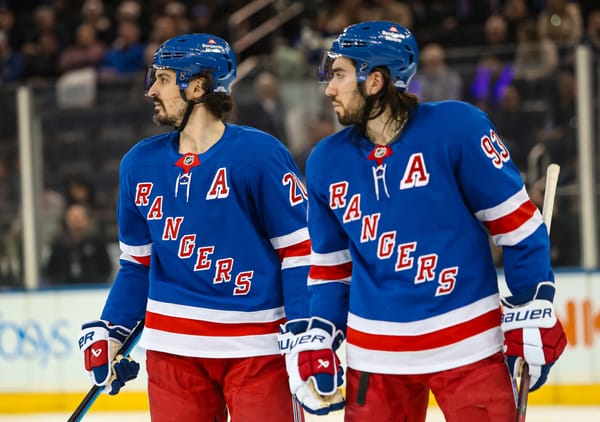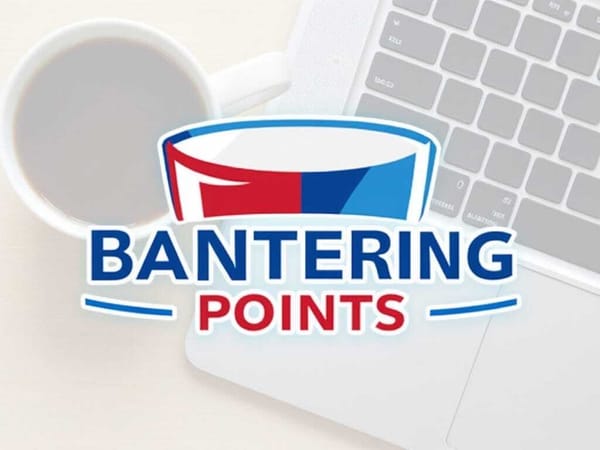Rangers Mailbag: Post-Deadline/Rebuild Edition
Given how quickly the Rangers completely changed the look and philosophy of the organization, a lot of you had questions about everything going on and what is to come. I selected some of the questions you threw my way and tried answer them to the best of my abilities.
If your Kevin Shattenkirk what is going through your mind. You wanted to play in New York but probably not expecting a complete fire sale. Do you see him in the future?
— Kendall Kerr (@kkerr7) February 27, 2018
Do you see the NYR trying to move Shattenkirk in the summer? Kevins terrific, but tough to see where a 30-year-old-to-be dman fits in this rebuild?
— Michael Sehn (@MichaelSehn816) February 27, 2018
I think both the Stepan trade and the Shattenkirk negotiations foreshadowed the events of this past week. The Rangers made it clear during the summer that they did not want to give Shattenkirk more than four years. While there’s merit to that thinking as a general principle, I think the Rangers were astutely aware that this season could end with a rebuild and wanted to make certain that they were not stuck with any long-term commitments that could pose a problem down the road.
I think the Rangers have to, and will, listen to trade offers for anyone in the organization besides Lundqvist, Chytil, and whomever they draft with their top pick in the draft. That being said, I anticipate Shattenkirk survives the summer, and he probably should. For one, the Rangers are mandated by the collective bargaining agreement to surpass the salary floor.
You also can’t have a completely barren roster, for many reasons. You want veterans with the ability to show the young players the ropes and make them better players on the ice. Someone like Shattenkirk is a particularly nice player to have because he takes tremendous pride in playing for the Rangers and being a New Yorker. These kind of “intangibles” are often widely overvalued, but they definitely still matter. Particularly on a young team.
Is this what Shattenkirk hoped for when he signed with the Rangers? I would assume not. However, there is more to life for professional athletes than winning a championship. He’s living out a childhood dream, and gets to live near his immediate family. I imagine, even if for only a few years, he’ll be happy.
There’s little risk with keeping Shattenkirk and plenty of upside. If the Rangers manage to get competitive in 2 or 3 years, then he’ll be a good player to have. If not, then they’ll be able to trade him and get a pretty decent return.
What are we planning on doing with hayes, zib, lias, chytil and vlad who are all viewed as centers by management?
— Morris grazi (@GraziMorris) February 27, 2018
This is going to be the one of the team’s top storylines of the offseason. The Rangers already have Zibanejad locked up for four more seasons, and both Vladislav Namestnikov and Kevin Hayes will need contract extensions this summer. Both can also force the Rangers into arbitration.
According to Matt Cane’s free agency model, a four- or five-year contract for Kevin Hayes is projected to cost between $4.5 and $4.85 million per season. For Namestnikov, it’s between $5 and $5.2 million. Zibanejad is already at $5.35 million. Do the Rangers really want to commit $15 million long-term to three centers; none of whom pass as an unequivocal first-line center? That is particularly undesirable given that it would block Filip Chytil and Lias Andersson. Yes, one or both could play the wing, but they are both most valuable at center. It would be a poor idea to force them onto the wing during the most important years of their development.
It is possible that the Rangers give a short-term contract to one or both of Hayes and Namestnikov, and decide to delay a decision. That comes with the risk of losing both as free agents or as rentals, whereas their trade value is at its peak right now. So perhaps the Rangers will want to trade a center either this summer or next trading deadline. Mika Zibanejad has a no-movement clause that activates in the summer of 2020. Like with Stepan, they could trade Zibanejad before that kicks in.
This isn’t a decision the Rangers absolutely have to make this summer, but it sure is one for which they need to keep an open mind and at least make sure they’ll be prepared for when a plan does need to be carried out.
Out of all the defensemen acquired, who might be the first to make the team, and when? Thanks for taking my call, I'll hang up and listen (to the mailbag)
— Jeffrey Brauner (@Jeff_Brauner) February 27, 2018
Yegor Rykov, acquired in the Michael Grabner trade, plays on the third-pairing for the best non-NHL hockey team in the world. He turns 21 in April. In a theoretical world where he’s signed to a contract, he’s most certainly a finalist for a spot on the Rangers next preseason, if not on the NHL roster altogether. Alas, he is signed with SKA in the KHL for the 2018-2019 season. All signs point to him signing that spring, though, and he’s a good bet to make the team for the 2019-2020 season.
Libor Hajek, acquired in the trade with Tampa Bay, is next in line. He had a strong World Junior Championship, anchoring the defense of the fourth-place Czech Republic. Playing in the WHL, he is very polished relative to the rest of the league.
He’ll most certainly be in the AHL with the Hartford Wolf Pack next season. While I don’t think he will be overwhelmed, I do think it’s going to be an adjustment. I spoke to one scout who thinks it’s going to take time for Hajek to “get acclimated to the pro pace,” and he also needs to work on passing inside the defensive zone. In junior hockey, he does a great job of getting past individual forecheckers and skating pucks out of danger, but he won’t be able to fall back on that every time in the AHL, where there is better structure. The Rangers are likely looking at two years - maybe a year-and-a-half if all goes well - before Hajek is a full-time NHLer.
Last on the list is Ryan Lindgren, who was acquired from Boston for Rick Nash. There are certain parts of his game that, in isolation, are NHL-ready. He’s a very good skater, and he’s probably close to what his ideal NHL size looks like. However, there is very little offense to his game right now; even by shutdown defensemen standards. Lindgren just turned 20 years old a few weeks ago and is a sophomore at the University of Minnesota. There is no rush here. He’ll probably play two more seasons at Minnesota, then need another year in the AHL.
This, of course, is in a theoretical world where everyone develops as hoped. In the real world, that’s almost certainly not going to happen. Rationally and practically speaking, the baseline expectation should be that the Rangers get one NHL defenseman out of this group, with a good possibility of two.
I think the disappointment in the hauls for 61/27/10 are due to missing out on "A" prospects. We've lacked true star power (besides HL) for years. Since we couldn't pry "A" prospects even w/ our top trade chips, are we destined to be a sum of parts team, save winning the lottery?
— d-lo (@dlo6215) February 27, 2018
Exiting the trade deadline without the acquisition of a single A-level prospect was not ideal, but what’s done is done, and the Rangers nonetheless acquired a number of quality pieces. Finding elite talent is the most difficult part of building a hockey team, and General Manager Jeff Gorton has a lot of work to do in to get it done.
That being said, what the Rangers did at the deadline is important. Teams like the Islanders, Oilers, and Sabres have proven time and time again that your team is still going to be mediocre at absolute best if you do not surround your top players with other talent throughout the roster. The wingers currently in Edmonton’s lineup have combined for 38 goals this entire NHL season. That’s it! Casey Nelson (???) and Viktor Antipin (???) are currently on Buffalo’s second defensive pairing. Dreadful.
In contrast, Toronto’s rebuild has been expedited. Yes, that’s largely because they’ve landed some elite talents in Matthews, Marner, and Nylander. It’s also because they built up a quality corps of secondary players. The Leafs are probably not a playoff team without the likes of James van Riemsdyk, Tyler Bozak, Zach Hyman, and Connor Brown. Travis Dermott and Connor Carrick make up a quality third pairing on defense.
Are Brett Howden and Yegor Rykov going to be the backbone of a Stanley Cup contender?Probably not. Jeff Gorton will have to find those pieces somewhere else. I think Brett Howden could become a great third-line center, though. Libor Hajek has realistic upside as a legitimate #4 defenseman. Because the Maple Leafs already had depth in place, they became a playoff team once they added a few elite players. With the prospects and draft picks the Rangers acquired, they have a tremendous opportunity to lay a foundation of depth that will hopefully make it easy to trend upwards once they do land a few superstar players.
Is it possible the younger team next season will compete for a playoff spot?
— Anthony DeLorenzo (@AntDeLo) February 27, 2018
There were many more tweets like this. Look, the Rangers published a letter saying they were going to rebuild. Then, Jeff Gorton said in multiple interviews and press conferences over the last few weeks that they will rebuild, citing what teams like Chicago, Pittsburgh, and Los Angeles have done. Then, they traded all of their free agents. Then, they traded their number-one defenseman and second-leading point producer.
At some point, everyone is going to need to take the hint and come to terms with the situation. This team is rebuilding. Not retooling. Not getting a makeover. Rebuilding. Are there moves the Rangers could this summer that would turn them into a playoff team? Yeah, probably. But this is a team that has won one playoff series in the past three years. Another season or two of finishing in the wild card and maybe grinding out one playoff series victory is pointless.
The New York Post’s Larry Brooks put the odds of Tavares signing with the Rangers at “Point 005.” If Tavares leaves the Islanders, it’s to join a contender. Why would he draw the ire of Islanders fans and sign with a team that just completely liquidated? Even if they do land him, so what? The Islanders were not a John Tavares away from being a Stanley Cup contender, and neither are the Rangers.
Is it possible that the Rangers are a playoff team next year, or in 2020? It can’t be unequivocally ruled out. Glen Sather anticipated a long rebuild after the 2005 lockout, only for arguably the greatest goaltender of all time to fall into the team’s lap and push them into the playoffs immediately. This year, the Devils became a legitimate playoff team a year earlier than anticipated. But if the Rangers do make the playoffs in the next year or two, it should be happenstance; not by design. Every move Gorton makes this summer should be made with the intention of being the best team in hockey by 2022 or 2023.
Would it be worth it to try to bundle all three first rounders to move into the top 3 at the draft?
— David Williams (@DaveWilliams96) February 28, 2018
Do you think it’s possible to package picks/prospect/players to move up to 1 and pick Dahlin? Would a team at 1 even consider this? Is it just flat out cost prohibitive and foolish?
— Jason V (@vopemon) February 28, 2018
Any chance the #NYR can bundle their 1st rounders to get the overall #1 to get Dahlin if they don’t win the lottery or is he so far ahead of the rest of the field (ie McDavid) no team would trade the pick? Who’s the best player in the 5-8 range?
— SA (@ScottRAnson) February 27, 2018
Again, I got a lot of tweets along these lines. In fact, our good friend Joe Fortunato texted me to ask the same thing!
If the Rangers landed a top-three pick in this draft, how open would you be to the idea of trading the pick? I’m guessing not very open! If Edmonton loses its mind and offers McDavid? Sure! It would take an unbelievable overpayment to get it done.
So, then, why would that be different for any other team? The players available in the 2018 draft aren’t a secret. All 31 teams know what Rasmus Dahlin and Andrei Svechnikov are, and all 31 teams want them.
It’s been 10 years since the last time a top-five pick was traded. It’s been 15 years since the last time the first-overall pick was traded. The last time a team traded a top-three pick without getting one in return was 2001. The Islanders traded the second-overall pick (among other things) for Alexei Yashin; a 27-year-old center who had been a point-per-game player over his last four seasons. The Rangers do not have a superstar in his prime to offer to other teams.
Is it possible the Rangers could trade into the top-three? Yes, it wouldn’t be unprecedented. But any idea where the Rangers trade a bunch of quantity in return for the opportunity to land a franchise player is almost certainly a fantasy. And any team who trades the first overall pick for anything other than the overpayment of the century should be contracted on the spot.
Do Hughes or Boqvist project as legit 1D? Is that org’s biggest need now that Mac is gone?
— Barnaby Jones (@BarnabyJones) February 27, 2018
Barnaby Jones is referring to defensemen Quinn Hughes and Adam Boqvist; both of whom are projected to be top-10 picks in the 2018 NHL Draft. We’ll be doing a lot of work in the next few months evaluating the draft and ranking players, but yes. Hughes and Boqvist can both be #1 defensemen in the NHL, if not outright superstars.
Picking for need is a terrible idea, for many reasons. First, the gap between talent in the firsts few picks is tremendous. When it’s the fifth round of the draft and there are three players available whom you rate equally? Sure, organizational need can be a tiebreaker. But talent is talent. The Rangers specifically don’t have the luxury of going for need. They lack elite talent at every position.
There’s also the fact that you don’t know what your team is going to look like in three years. In 2008, the Washington Capitals had two fo the top goaltending prospects in the world in Semyon Varlamov and Michal Neuvirth. Imagine, then, if they had passed on Braden Holtby in the 2008 NHL Draft due to perceived need. If down the road you find yourself with too many players at one position, you can always make a trade from that strength down the road. That’s the situation the Carolina Hurricanes find themselves in now, and it’s a good bet that they’ll trade one of top-four defenseman this summer to address a need at forward.
The Rangers need everything, but it is fair to say that they need offensive defensemen most. Of all of the young defensemen in the organization, only Anthony DeAngelo really projects as a top-four offensive defenseman. And even he is a big question mark on a good day. The Rangers need to draft the best player available with their natural first-round pick. But sure. In an ideal world, the best player available will happen to be an offensive defenseman.




